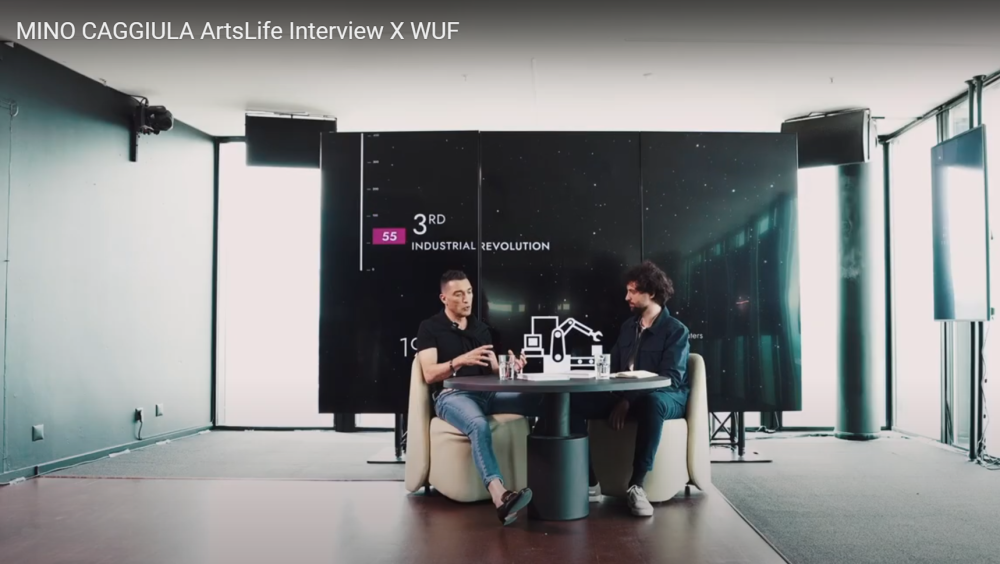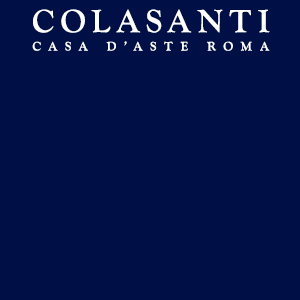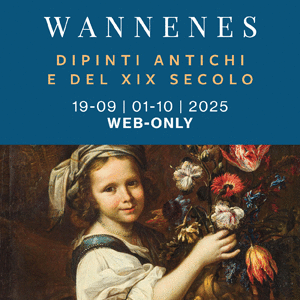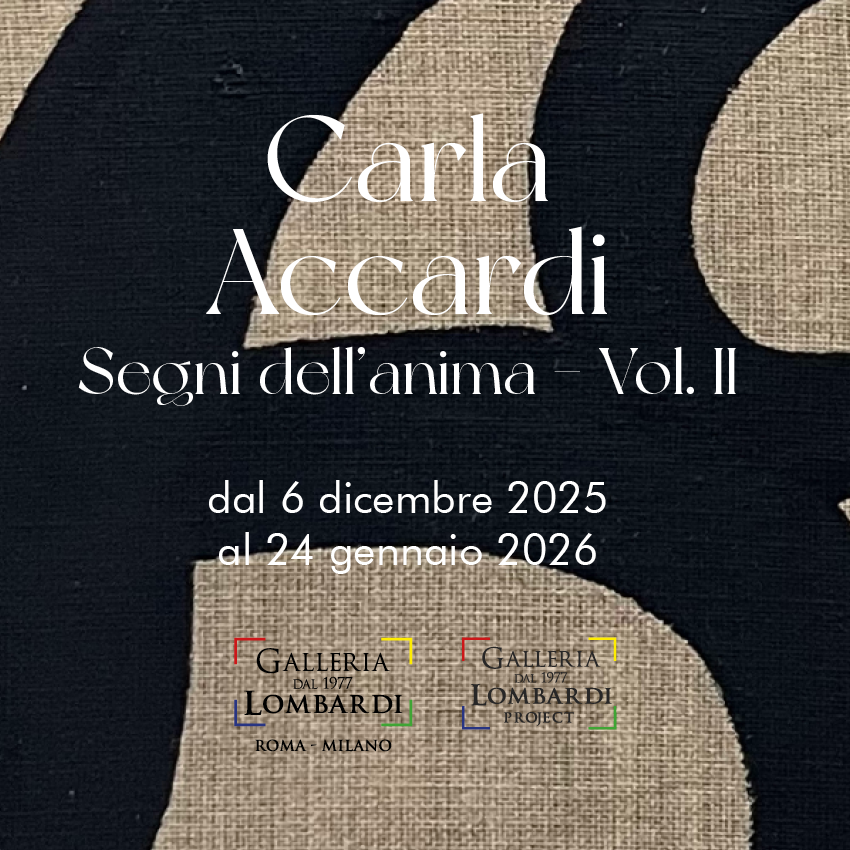Dedicata al mondo dell’arte WUF è pensata come un dispositivo contemporaneo di connessione tra giornalisti e protagonisti dello scenario artistico e ha debuttato con uno speciale appuntamento e due intense giornate di attività martedì 11 e mercoledì 12 giugno 2024. La nuova organizzazione WUF (We Understand the Future) è dedicata a connettere voci creative e valorizzare progetti artistici emergenti attraverso un approccio guidato dall’arte e dalla tecnologia. L’edizione inaugurale prende vita con un evento esclusivo per la stampa realizzato negli spazi dell’iconico Bar Rouge, con la partnership di ArtsLife e de La Lettura de Il Corriere della Sera.
La parola ai protagonisti: MINO CAGGIULA
“So we encourage this movement of people inside together with nutrition because if you eat organic food and eat well together with proper nutrition, you do 80% of your well-being. We encourage this and we use this through edible gardens”
Mino, you are an architect based in Switzerland, is that correct?
Both in Milan and in Lugano.
So you have a headquarter in Lugano and also an office in Milan. You work and collaborate with many entities in Switzerland and Italy. Can you introduce us to your activities and what your studio of architects does?
Yes, my career started in a strange way. I began as a bricklayer at the age of 16 to 20, working in a construction company. Then I understood it was important for me to find new solutions and explore what I wanted to do with my life, which led to my great love for architecture and the world of art. I started studying at a university first in Switzerland and then also in the United States at Columbia University.
Wow.
Then I came back to Switzerland and opened my own office. We are now 30 architects.
When did you open your office? When did it start?
Almost 20 years ago. We are quite young but really lucky because we have had a lot of people trust in us in the past and still do today. We hope this continues in the future. We have learned a lot from our projects and buildings. We are lucky to be able to work in Switzerland and Italy, with the new goal of expanding to New York City because I grew up as an architect there, working with Steven Holl Architects in New York City for two years, from 2005 to 2006.

Impressive.
We won several competitions, both in the field of museums. The first was the Herning Center of Art in Herning, Denmark. The second was a museum in the northern part of France. I worked hard to have the opportunity to stay in New York, but then I changed my mind and came back.
You have developed a mixed architectural culture with a lot of influences from different parts of the world, building a particular vision that you put into your work. What is your architectural vision?
I start from making a journey, if you allow me. Life on Earth has existed for billions of years. About three billion years ago, the first sea on Earth appeared. After billions of years, around 2.1 million years ago, humans started to appear on Earth. Two hundred thousand years ago, we started using our brains as people. Six thousand years ago, we started living in civilizations, and sociality grew up as we know it today. However, in only 240 years, we changed everything with the Industrial Revolution, first with steam and then with oil. In 1969, the internet and computers arrived, and today we have AI, robotics, and the Internet of Things.
Yes.
As an architect, I have a great responsibility because we often forget the importance of life on Earth. We sometimes overlook the importance of our origins and well-being in this fast and chaotic world. I crystallized this in a monograph called “Open Being,” which I published a couple of years ago. “Open Being” or “Being Open” represents looking at a topic from different perspectives and working with people who are better than us from different fields to achieve an holistic vision of well-being in architecture.
Interesting.
The only way to do this is to look at the world from different perspectives and question ourselves often. Only the foolish never change their minds. It’s important to be curious and try to understand the future. In our studio, we adapt our vision to the client and the specific situation. The nice thing about our protocol, which consists of three points plus one, is that the first point is Genesis. It’s important to go back to the future to understand the real needs of people. Architecture was born to protect people. We were living in caves millions of years ago, and architecture protects us from various aspects, including meteorological and psychological aspects. It’s very important to listen before speaking, not only to our clients but especially to the people who will live inside the architecture we design and build.

That’s a profound approach.
Yes, the second point is the place. We may go to Mars or the moon, but Earth is our home, and we must take care of it. Understanding the site we are going to design through models is my way of working. I start creating only after analyzing the needs of people and the place. The place has two different approaches in the analysis. The first is technical and practical, involving morphology and meteorology. The second is intangible but important, including memory, history, economy, and geopolitics. I can create all over the world, but I must change my approach to understand what each place needs.
That’s a great challenge.
Yes, and these two parts are just part of the analysis. The third part is the creativity, which makes me smile every day coming to my office. We must smile more to be people who can do something better for this changing world. Creativity allows me to work with people better than me in my team, with clients, and with craftsmen. Craftsmanship is fundamental because, in the world of architecture, it cannot exist without craftsmen. This relationship and idea of working with people to exchange values and ideas is crucial.
That sounds like a comprehensive approach.
Yes, and we also use images generated from the world of art, the site, and the clients we work with. This allows us to create something better. The plus one in our protocol is the goal: the well-being of people. Well-being is difficult to achieve, and real luxury today is the well-being of people. Feeling well is something you cannot buy, and it has great value. This is what we work on every day through motion, making our projects encourage movement and healthy living, together with nutrition and edible gardens. We design gardens you can eat from, like rosemary and sage, to teach people the importance of knowing where their food comes from and how it affects their well-being.
That’s very innovative.
Yes, and we also focus on perceptions and cognition, how you feel a space through the five senses. Every object, from a spoon to a train, is designed based on anthropometric relationships between humans and objects. This anthropometric relationship is something we must consider through the environmental aspects. You can feel good or bad in an environment, and this impacts well-being. We also emphasize carbon-neutral and zero-emission projects, using technology to anticipate and meet people’s needs based on data.
That is a very broad and interesting perspective. Can you give an example of a recent project that illustrates these principles?
One of our projects that summarizes our protocol is the atelier of an artist named Alice in Oro, in the southern part of Switzerland. Alice is a great artist and person who splits her time between Ecuador and Switzerland. She helps the poor in Ecuador and creates a strong bond with them, which she translates into her art. When I visited the site, there was an existing villa, and the orography reminded me of how the Greeks designed their theaters, using the natural landscape. We built a model of the site and chose two curved lines, lifting them like leaves moved by the wind, creating an architecture that is part of the landscape.
Fascinating.
We used the concept of a cenote, an ancestral tectonic movement creating a beautiful empty space filled with greenery, water, and biophilic elements. This design encourages a centripetal force bringing Alice into the womb of Mother Earth to create her art, and a centrifugal force bringing her into the landscape to live her daily life, interconnected with nature. The atelier includes elements like light wells, natural cooling, and a biophilic pool cleaned by plants, creating a seamless relationship between inside and outside.

Wow, that’s really impressive.
Yes, the space is designed for Alice, framing the landscape and integrating with it. We demolished the existing villa to open the view for the neighbors, creating a relationship with the land and the people around. The chenot, with a round pool of water reflecting the architecture, allows Alice to lie down and experience a natural massage from the gravel while observing the sky. This project exemplifies our approach to creating well-being through architecture.
That’s truly inspiring. How do you see the relationship between nature and technology in your work?
We are working on a project called Adam City Port in Lugano, exploring how real and virtual worlds can coexist. The project aims to reuse non-places and allow human rebirth in unused spaces. We use screens and portals to connect people to the new Lugano City of Art, combining real and virtual experiences. Technology today is often seen as creating a dystopic world, but if architects and thinkers work together, we can use technology to enhance human well-being. Through sensors and the Internet of Things, we can anticipate people’s needs and create environments that adapt to them.
That’s a great vision. How do you balance the technical and humanistic aspects of architecture in your work?
Architects are not just designers and builders; we are thinkers. To stay up-to-date, we must participate in talks, conferences, and think tanks, exchanging knowledge with people better than us in different fields. Books are important, but exchanging knowledge with people is faster and smarter. We organize and participate in conferences like the one in Rome on June 27th, where we will discuss how art drives architecture. This exchange of ideas is crucial for advancing our work and ensuring it meets the needs of people and the environment.
Thank you for sharing your insights, Mino. Your work is truly inspiring, and I look forward to seeing more of it in the future.
Thank you for having me. It was a pleasure to share my vision and work with you.











